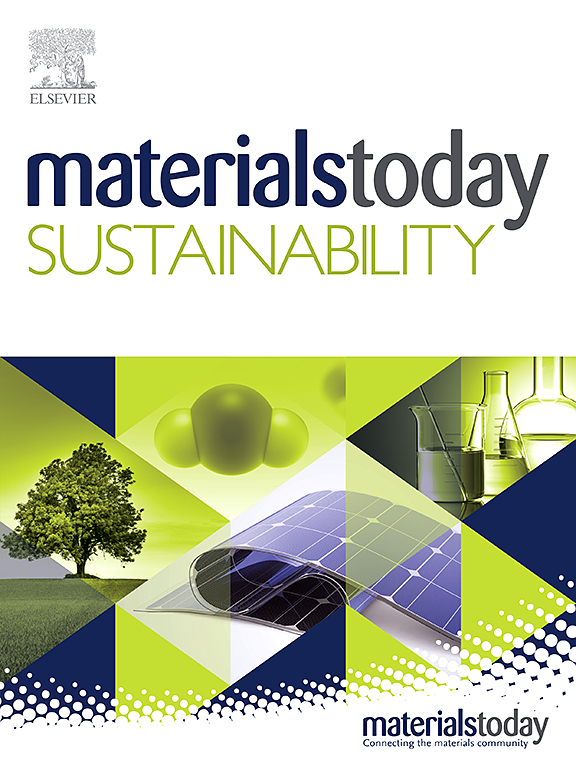合理设计体积庞大的MoS2@C@MoS2分层材料,作为锂离子电池的增强阳极
IF 7.1
3区 材料科学
Q1 GREEN & SUSTAINABLE SCIENCE & TECHNOLOGY
引用次数: 0
摘要
分层材料集成了每个组件的优点,是有效存储锂离子的理想结构。然而,构建具有优异物理/电化学性能的混合结构,特别是大块的天然矿物,仍然具有挑战性。本文采用前驱体分解方法构建了体积庞大的三层MoS2@C@MoS2分层材料。超薄二硫化钼纳米阵列垂直生长在氮掺杂碳包覆膨胀辉钼矿表面(MoS2@C)。二硫化钼纳米片与膨胀辉钼矿具有相同的组成,有利于减少副反应。二硫化钼纳米片缩短了离子扩散和电子传递路径,保证了电解质的高效渗透和电解质与电极的充分接触。分层设计既有效地保留了块状材料的高能量密度,又具有纳米材料的高比容量。结果,MoS2@C@MoS2分层材料在200次循环后,在100 mA g - 1下具有1035 mAh g - 1的高比容量,即使在1 a g - 1下也具有860 mAh g - 1,具有良好的稳定循环寿命和倍率性能。此外,本文提出的分层材料合成策略为设计其他大块矿物材料提供了一般途径。本文章由计算机程序翻译,如有差异,请以英文原文为准。

Rationally designed bulky MoS2@C@MoS2 hierarchical materials as an enhanced anode for lithium-ion batteries
The hierarchical material integrates the advantages of each component and is an ideal structure for efficiently storing lithium ions. However, constructing hybrid structures with excellent physical/electrochemical properties, notably bulky natural minerals, remains challenging. Herein, the precursor decomposition method built a bulky three-layer MoS2@C@MoS2 hierarchical materials. Ultrathin MoS2 nanoarrays grow vertically on the surface of nitrogen-doped carbon-coated expanded molybdenite (MoS2@C). MoS2 nanosheets and bulky expanded molybdenite have the same composition, which is beneficial for reducing side reactions. MoS2 nanosheets shorten the ion diffusion and electron transport paths and ensure the efficient penetration of electrolytes and full contact between electrolyte and electrode. The hierarchical design not only effectively retains the high energy density of the bulky material but also has the high specific capacity of the nanomaterials. As a result, the MoS2@C@MoS2 hierarchical material displays a high specific capacity of 1035 mAh g−1 at 100 mA g−1 after 200 cycles and 860 mAh g−1 even at 1 A g−1, demonstrating decent stable cycle life and rate performance. Additionally, the synthesis strategy of hierarchical materials proposed here offers a general route to design other bulky mineral materials.
求助全文
通过发布文献求助,成功后即可免费获取论文全文。
去求助
来源期刊

Materials Today Sustainability
Multiple-
CiteScore
5.80
自引率
6.40%
发文量
174
审稿时长
32 days
期刊介绍:
Materials Today Sustainability is a multi-disciplinary journal covering all aspects of sustainability through materials science.
With a rapidly increasing population with growing demands, materials science has emerged as a critical discipline toward protecting of the environment and ensuring the long term survival of future generations.
 求助内容:
求助内容: 应助结果提醒方式:
应助结果提醒方式:


